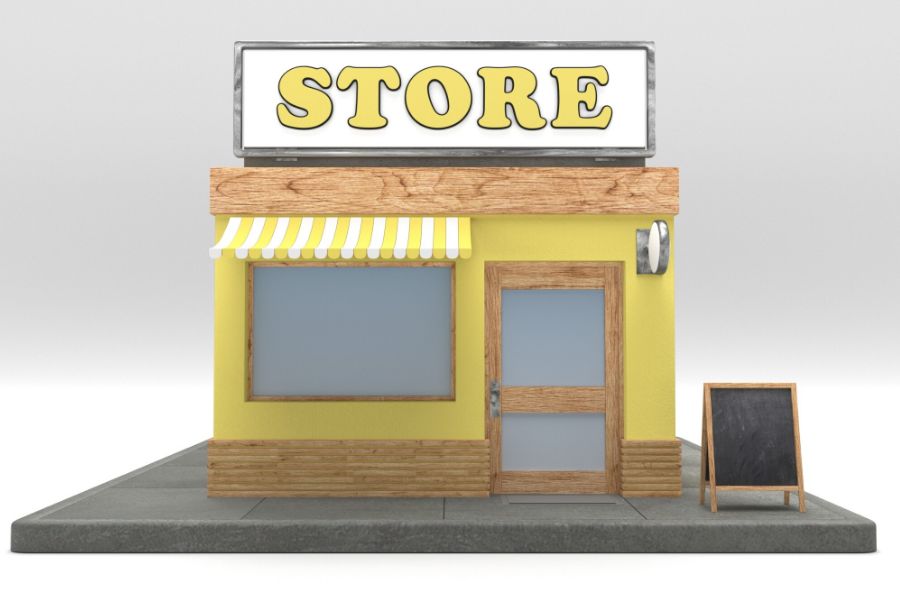Over the past 20 years, brick-and-mortar retail comeback has changed considerably. The pandemic’s 20-month duration saw an acceleration of that trend. Late-adopting shops that had trouble before COVID-19 were forced to make drastic modifications and close locations. But for health-conscious shops who comprehend the buying process and use cutting-edge tactics, brick-and-mortar locations are a growth sector and the cornerstone of a prosperous business strategy.
Customers Prefer Receiving The Item They Need At The Same Time They Buy It
In the ever-evolving landscape of retail, understanding your target demographic is paramount. Offering something customers can’t easily obtain online is the key to success in the retail industry’s ongoing transformation. Brick-and-mortar stores have a unique advantage – they can create immersive, tactile, and personalized shopping experiences that digital platforms often lack. By leveraging this strength and crafting a well-thought-out strategy, retailers can not only survive but thrive in today’s digital retail climate. The key lies in providing value, convenience, and engagement that resonates with their target audience, ultimately giving customers a compelling reason to choose the in-store experience over online alternatives.
Customers Value The Advantages Of Sizing And Feeling Before Buying
However, despite how convenient the online retail market has become, real-and-mortar establishments still provide a level of ease that online shopping simply cannot match. Many individuals still like going shopping in person for immediate needs like groceries or a new phone charger. Even other products, like clothing or a soothing bubble bath, are frequently desired by customers the same day they place their order.
Minimizes Additional Packaging And Shipping Expenses
Brick-and-mortar stores not only provide customers with convenience and distinctive experiences, but they can also lessen the waste produced by unnecessary packaging and shipping.
To ensure that their products arrive in pristine condition, many internet shops must pack their merchandise in huge boxes with lots of padding. However, physical shops enable customers to purchase goods without any additional packaging, a feature that has grown more crucial with the emergence of millennial and Gen Z consumers, for whom environmental concerns are of utmost importance.
Brick-and-mortar stores are considerably reducing waste by enabling customers to buy things without needless packing or shipping. This is another superb illustration of how offline retailers can adapt to evolving customer demands in order to remain competitive in our digital environment.
The Future Of Brick And Mortar Stores
Customer Acquisition Strategies
Retail businesses provide these customers with financial or experiential rewards to encourage them to complete their transactions in-store. Retailers have the chance to establish trust with shoppers once they enter the store and upsell. The best way to accomplish both is through excellent customer service and enticing promotions.
This type of programming enables shops to lower their spending on high-fee significantly, third-party advertising networks while still drawing bigger volumes of local customers in-store as internet customer acquisition expenses climb.
Interactive In-store Customer Experiences
The COVID-19 pandemic brought unprecedented challenges to retailers, forcing many to close their doors due to lockdowns and social isolation measures. As a result, commercial real estate vacancies increased significantly. However, amidst these challenges, merchants had the opportunity to pivot their marketing strategies. With physical stores temporarily closed, they could redirect funds previously allocated to acquisition-focused digital platforms like Facebook, Instagram, and Google towards fixed expenditures. This shift in investment allowed businesses to adapt to the changing landscape, explore new avenues for growth, and potentially fortify their online presence. It underscored the importance of agility and resource allocation during times of crisis in the retail industry.
A Revival For Malls
The number of people visiting malls has increased since the outbreak. Mall real estate is on course to surpass a 10-year lease record because they offer a practical one-stop, quick-service solution for non-food needs.
Many smaller firms are considering pop-ups and space-sharing collaborations as a workaround for growing real estate costs in this new competition to secure retail comeback space, particularly open-air venues.
More Pop-Up Experiences
Retail comeback pop-ups generate the kind of curiosity that complements acquisition techniques. Customers learn about the pop-up online or from friends, and the fact that it is only temporary creates excitement and draws people into the store.
With further knowledge of the brick-and-mortar resurrection, contact us to discover these fresh retail comeback opportunities for your shop.
►►► See our products: Magento POS, BigCommerce POS, Shopify POS, Woocommerce POS, NetSuite POS, Commercetools POS, Custom POS, White label POS, Customer Experience Solution and Next-Gen POS




